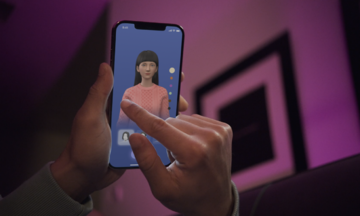This method involves alternating cycles of fast and slow walking. Each cycle lasts three minutes and is touted as being more effective than the standard 10,000 steps-a-day goal.
Walking is deeply ingrained in Japanese culture, from commuting to school and work to shopping. In major cities like Tokyo and Osaka, many people walk several kilometers daily to navigate between train stations and their destinations. Urban infrastructure is designed to be pedestrian-friendly, and the culture encourages light exercise rather than relying on personal vehicles.
This habit is believed to contribute to Japan's low obesity rates and high life expectancy. A 2007 Japanese study found that high-intensity interval walking improved blood pressure, endurance, and cardiovascular function in middle-aged and older adults.
However, it wasn't until Eugene Teo shared a summary video of this exercise on TikTok and YouTube that the method gained widespread attention. He goes by Coach Eugene on social media and currently has over 426,000 followers on TikTok and 1.22 million on YouTube.
Teo's video garnered over 27 million views, transforming a relatively obscure exercise into a global trend known as "Japanese walking."
"It's the cardio that a lot of people are missing," Teo said. He emphasizes effort over perfection. Walkers should push themselves to a brisk pace that elevates their breathing but remains sustainable for three minutes. The slow walking segments serve as recovery periods, adjustable to individual fitness levels.
However, not all experts consider Japanese walking to be the ideal method. Dr. Helga Van Herle at the University of California (USA) noted that high-intensity interval walking is not yet a prominent recommendation in the medical field.
While this exercise can increase activity levels, its benefits and ease of implementation should not be overstated. Alternating speeds every three minutes and using tracking devices could be challenging for some.
"Sustained brisk walking for shorter periods might offer similar benefits, but there isn't enough evidence yet," Van Herle said. Despite the debate, experts agree that short bursts of high-intensity exercise offer significant advantages.
Searches for the term "Japanese walking" have surged in the past year, particularly since April, according to Google Trends.
Experts suggest that short bursts of high-intensity interval training can yield noticeable benefits. Yasuyuki Suzuki, a cardiologist in Tokyo (Japan), observed that while the topic has regained attention, the method isn't as prevalent in Japan as it is in other countries.
Previous studies have indicated a link between brisk walking and a reduced risk of dementia. Walking, in general, is associated with lower mortality rates, reduced cancer risk, and improved cardiovascular health.
"I think it’s a good thing to encourage people to think of walking as exercise," Suzuki said. "Finding ways to make your walks more effective for you isn't a bad thing."
Professor Sarah T. Roberts at the University of California (USA) believes the trend's popularity reflects broader societal issues, such as rising healthcare and fitness costs.
She notes that amid economic uncertainty, with many unable to afford 300 USD monthly gym memberships, simple, low-cost trends like walking become more appealing.
However, she cautions against seeking health advice solely from TikTok or other social media platforms.
Ngoc Ngan (According to the LA Times)












